Wagga Wagga Council’s electric car will struggle to cover the region’s 2500km road network
So Wagga Wagga City Council bought itself an all-electric car. With a range of 280km between four-hour recharges, the small Hyundai is no doubt an effective city runabout. Drive it to work, drive it home, plug it in and repeat. Easy. But in Wagga?
Opinion
Don't miss out on the headlines from Opinion. Followed categories will be added to My News.
Stay across all the biggest talking points affecting NSW in September as The Daily Telegraph editorial offers you key insights into the news and issues that matter to you.
SEPTEMBER 29: Charge of the Wagga sparkler
Living in regional NSW presents challenges distinct from those faced by Sydney residents.
Long distances, tough roads and limited availability of goods and services demand a certain resilience.
Unlike their city cousins, who have extensive and immediate access to whatever they might wish for, country residents know they must plan ahead.
This helps develop resourcefulness and independence.
The vehicles usually favoured in the bush also exhibit distinct qualities. Reliability and range are of prime value, because the last thing you need on a lonely country road is to be stranded.
A 4WD is not a fashion statement out in the regions. Instead, it is often a basic requirement.
So Wagga Wagga City Council bought itself an all-electric Hyundai IONIQ.
With a range of 280km between four-hour recharges, the small Hyundai is no doubt an effective city runabout. Drive it to work, drive it home, plug it in and repeat. Easy.

But in Wagga it doesn’t make much sense. “This is not like owning an electric car in the city,” councillor Paul Funnell, who says the purchase is “absurd”, told The Daily Telegraph.
“To put it in perspective we have 2500km of road network in Wagga alone.”
Simplicity and ease of maintenance are crucial for a country vehicle. If the Hyundai requires servicing or repairs, however, it will need to be freighted all the way to Canberra.
Mayor Greg Conkey now plans to test the car’s viability as country transport by driving it 500km to Sydney. This could prove a fraught journey, but the mayor is ready for the road.
“It is worth seeing the pitfalls, pros and cons of the car,” Conkey said.
“At the moment it takes about five hours to get to Sydney or Melbourne. We need to see whether this vehicle would take much longer.”
Spoiler alert: it will, unless it is on the back of a truck.
Meanwhile, Lord Mayor Clover Moore’s Sydney City Council has been directed by the federal government to quit spending so much money on international and domestic travel or else stop lecturing Australians on climate change.
The council’s latest report reveals a $1.7 million spent on international travel and another $14.2 million on domestic.
Perhaps Wagga could give them that Hyundai.
SEPTEMBER 28: Build dams to damn Greens
A federal lifeline to the NSW state government will now provide an additional $7.9 million to accelerate a vital water plan.
This is an extremely fortunate development for the state government, in Coalition hands since 2011, which lags badly on water policy in general.
Following the Millennium drought, for example, NSW should have begun planning for the next inevitable water shortage. Construction of the odd new dam or two might have indicated a degree of forethought.
Instead, the last new dam in NSW remains the Split Rock Dam north of Tamworth, built 32 years ago. At the time, the state’s population was 5.6 million. It is now pushing towards eight million.
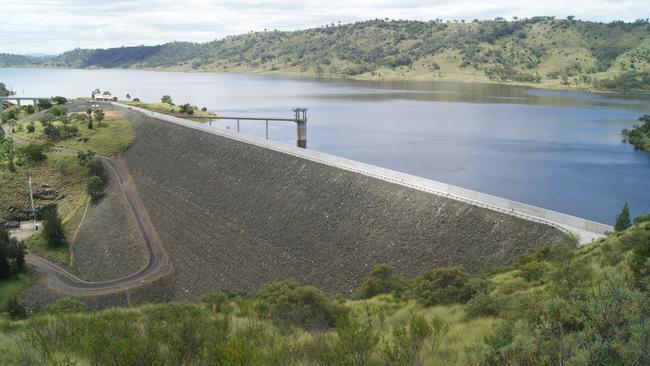
A certain frustration was evident this week in the words of Water Resources Minister David Littleproud.
“We perpetrate our own misery in this country by saying ‘why can’t we’ do things instead of ‘how can we’,” he said, reflecting on the absence even of any timetable for new dams.
It could well be that the Berejiklian government, like the Baird government before it, is spooked by the possibility of organised opposition to dams from green activists.
The Baird government, readers will recall, backed off from gas exploration following activist campaigns.
Since then, however, we have seen exactly what happens when voters have an opportunity to take on those activists at the ballot box.
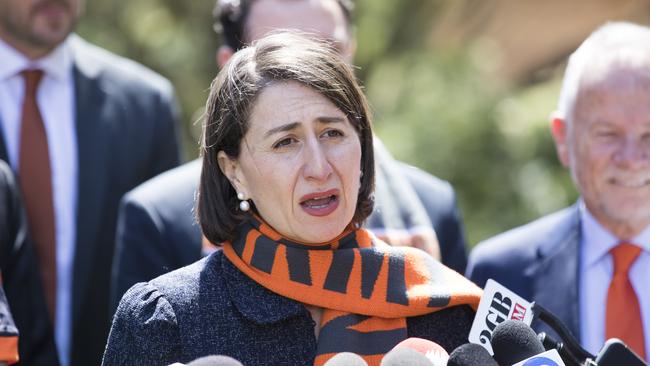
This year’s federal election, the so-called “climate change election”, put green activists back in their corner.
The state government should proceed with regional development, knowing that the majority of voters will embrace it.
As well, Premier Gladys Berejiklian could draw on the support of an unlikely ally: new state Labor leader Jodi McKay.
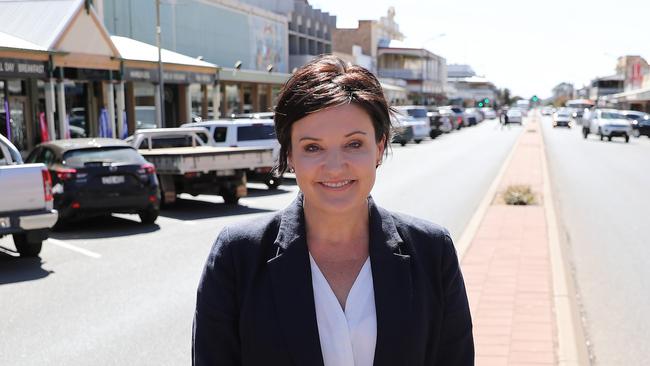
McKay grew up in Gloucester on the mid-north coast and said in her first press conference as leader that rural NSW was among her main priorities.
Right there the government and Labor have a chance to wedge the Greens and their associated activist movements and to push for dams, gas exploration and other vital advances.
The eco-activist crowd is artificially magnified by social media and sympathetic mainstream press.
If the state government took them on, they would vanish.
SEPTEMBER 27: Work for NSW or stand aside
This may seem blindingly obvious, except to certain unelected bureaucrats, but the state government and its various arms are supposed to act in the interests of people throughout NSW.
To that end, when an opportunity to create jobs appears in an area of the state beset by higher than average unemployment and a crippling drought, government entities should seize it with both hands.
Instead, in the lamentable case of the proposed multimillion-dollar Kepco Bylong Valley coal mine, the government was completely blindsided by our government-appointed Independent Planning Commission.
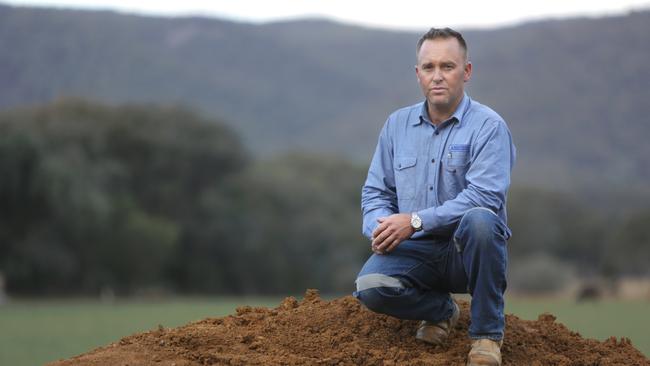
The IPC rejected the mine, and the more than 1000 jobs it would have delivered, due to concerns about coal from the mine contributing to climate emissions 8000km away in South Korea.
Ignoring the need for local jobs, the IPC cited “scope three” emissions as a reason to knock back the mine.
Now, belatedly, the Berejiklian government is beginning to realise that things here have gone badly awry.
The IPC, created as a way of putting an arm’s length distance between government and potentially lucrative planning decisions, is now dictating policy to the government.
And it is costing regional workers their opportunities for work as well.
The Daily Telegraph now reports that Premier Gladys Berejiklian’s office has held conversations with three senior ministers about reforming how scope three emissions are factored into planning decisions.
These should have been very brief conversations, for all that needs to be done is to wipe any consideration of scope three emissions from our planning guidelines.

Beyond that, thought must also be given to the IPC’s future.
“This problem is symptomatic of wider problems with the planning system and the Independent Planning Commission which need to be addressed,” NSW Minerals Council chief Stephen Galilee points out
“We’ve been warning government about the scope three concerns for some time because it’s significant to industry and investment in jobs in NSW.”
Jobs in NSW. Those three words need to be engraved above the office doors of every Coalition MP in the state.
SEPTEMBER 26: Canberra tokes a step too far
First time visitors to Canberra are often struck by just how different our nation’s capital is to any other Australian city.
The demographics are markedly distinct, thanks to Canberra’s huge population of public servants and other government workers. The city has a unique layout, due to a road planner’s evident roundabout obsession.
Even the court system is odd, with murder and manslaughter charges being thrown out in absurd numbers.
And now Canberra has another point of difference.
On Wednesday, it became the first Australian jurisdiction to legalise recreational marijuana.
Under the new law, Canberrans older than 18 will be permitted to possess 50 grams of marijuana and grow two plants.
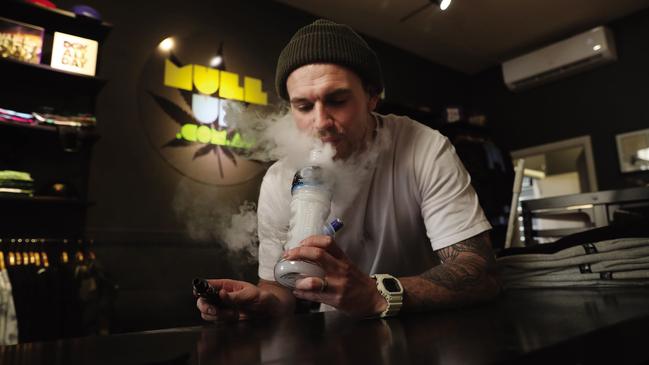
Labor and (of course) the Greens backed the legalisation, but a note of caution was sounded by ACT shadow attorney-general Jeremy Hanson.
He said Canberra’s Liberal opposition would not support the bill as it was poorly drafted and could lead to a number of “perverse outcomes”.
This is very often the way of things in Canberra.
Those inclined to celebrate what they may characterise as the long-overdue legalisation of a harmless recreation drug should be made aware of some relevant facts.
Due to improved hydroponic growing techniques, marijuana has changed markedly in potency since the 1960s and 1970s.
This is one reason why the UK’s previous Labour government sensibly upgraded marijuana to a class B drug. That much stronger classification means possession may result in a five-year prison term.

As well, several long-term studies of the effects of marijuana show definite links between even brief use of the drug and shocking mental health outcomes.
“The heaviest users of cannabis are around four times as likely to develop schizophrenia (a psychotic disorder that affects a person’s ability to think, feel and behave clearly) than non-users,” Australia chemical researchers Jerome Sarris and Joseph Firth wrote last year.
The news is not much better for lighter users: “Even the average cannabis user (for which the definition varies from study to study) is around twice as likely as a non-user to develop a psychotic disorder.”
It’s not what Canberra needs.
SEPTEMBER 25: Fix roads and then the world
If you live in one of Sydney’s wealthier councils, you should expect certain benefits from your ever-increasing council rates.
For example, you might expect pristine streets free of potholes, all of which would be quickly repaired by fleets of council-employed road maintenance crews.
But it doesn’t work that way.
In fact, the wealthier is your council, the more likely it is that your car — and your wallet, and your insurance premium — will be damaged by potholes.
That is because Sydney’s most cashed-up councils prefer to put their efforts into global issues such as climate change.
At the same time, as The Daily Telegraph reports, the councils that have raked in the most money from parking fines also have some of the highest levels of road complaints.
Consider the Inner West Council, which during the most recent financial year issued parking fines worth a total of $14.3 million.
With that sort of cash available, the area’s roads and streets must surely be perfectly cambered and silky smooth.
Think again. Last year the Inner West Council was in the top 10 zones throughout NSW for tyre-related NRMA call- outs, which include punctures caused by potholes. Nearly 700 calls were received.
Additionally, according to an Inner West Council spokeswoman, the council last year received an astonishing 1081 pothole call outs from residents and has a substantial $30 million road maintenance backlog.
But don’t worry about that, because in May the Inner West Council declared a global climate emergency. The local pothole emergency is clearly a second-tier concern.
Even some councillors are tiring of these heavy-fining, non-repairing shenanigans.
“If you’re relying on fines to make your budget then you have a serious issue,” Ryde Councillor Jordan Lane told The Daily Telegraph.
“Meanwhile we are off declaring climate emergencies which are well-intentioned but outside our remit. Let’s focus on getting our roads right first.
“Roads, rates and rubbish should be our focus.”
Of course, the reason we have local councils is precisely due to the need for the likes of rubbish collection and road repair.
We don’t elect councils so they can pretend to be branches of the UN.
SEPTEMBER 23: IPC and Stokes need to change
For the sake of accuracy, the NSW Independent Planning Commission ought to consider changing its name.
For, as recent IPC decisions demonstrate, it is not really into “planning” at all. Instead, the IPC has become the Independent Stopping Commission, our state-funded body for rejecting anything that hints of investment and progress.
While we’re at it, perhaps Planning Minister Rob Stokes’s portfolio could be renamed along similar lines.
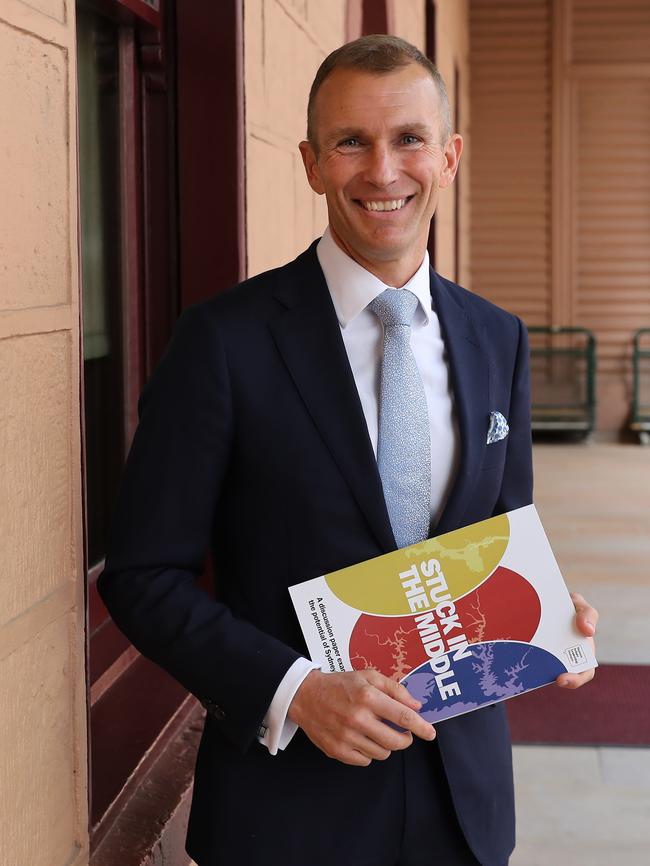
As NSW Minerals Council chief Stephen Galilee points out, both the IPC and Stokes are standing in the way of employment and industry. The IPC’s decision to oppose the $300 million Bylong Valley coal mine in central NSW is a case in point.
Knocked back due to feared emissions from coal-fuelled power plants in South Korea, the Bylong Valley project would have brought much-needed jobs to a region that suffers above average levels of unemployment.
Minister Stokes can assess this for himself by taking up The Daily Telegraph’s generous invitation to pay for a flying visit.
Justifiably incensed and fearful of future decisions that would also be made on the basis of foreign carbon dioxide emissions, the mining sector is fighting back with a powerful multimedia advertising attack on the NSW government.
“It is an indication of the depth of frustration and disillusionment felt with the NSW planning system, and with Planning Minister Rob Stokes,” Galilee explains.
“The industry’s concerns have been ignored and sadly are now being proven correct — jobs and investment are being lost. The NSW economy is under threat.”

Galilee’s summary may sound extreme, but it draws a logical conclusion from the IPC’s anti-Bylong call. If a coal mine can be rejected because of emissions, then just about any large enterprise may be rejected for the same reason.
It isn’t as though the Berejiklian government did not see this coming. The mining sector’s campaign follows what Galilee says were “months of engagement and warnings to the minister and government about the risks of the planning system to jobs and investment”.
And now we see the result of the government failing to take action. NSW has lost investment, and a region of NSW screaming for jobs is ignored.
SEPTEMBER 22: A hair trigger that trims our ranks
Running Australia’s Defence Force is never an easy task, especially during our current complicated era of political correctness.
Last year, for example, then-Australian Army chief Angus Campbell, since promoted to chief of the ADF, issued a directive prohibiting the wearing of “death” symbols.
These included the Grim Reaper, the skull and crossbones and even the Phantom cartoon character.

“It is always ill-considered and implicitly encourages the inculcation of an arrogant hubris,” General Campbell announced at the time.
“As soldiers our purpose is to serve the state, employing violence with humility always and compassion wherever possible.”
He added: “This symbology to which I refer erodes this ethos of service.”
Unfortunately, many of those under Campbell’s command felt otherwise, leading to considerable dissent in the ranks and a subsequently softened attitude.
Six days following his decree, General Campbell advised Army commanders they could present arguments in favour of displaying those scary symbols.
Now comes another military about-face. Two years after soldiers were kicked out of the Army under a new no-beards rule, the Army will again allow personnel to wear beards if they are prevented from shaving by a relevant medical condition formally diagnosed by clinicians.
But there is a twist.
Any soldier who was discharged during enforcement of the no-beard regulation will not be eligible for re-enlistment.
So if you have previously served in the Army, even if you have served for several impressive years, and you got thrown out for being bearded, then it is game over for you.
This apparently applies even if you have a valid medical reason for your facial hair.
If you turn up as a new recruit, however, and you have both a beard and a medical notes explaining why shaving is to be avoided, then you’re immediately good to go.
As Army veteran and federal Member for Herbert Phillip Thompson points out, this does not make a great deal of sense.
“I understand this is an internal Defence ruling and matter but as a former soldier this just simply isn’t fair,” he said.
He’s right. Let our bearded warriors fight for Australia.
SEPTEMBER 20: Climate change anxiety paralysing kids
A surprising feature of the various climate strikes held in Sydney is how many participants are always shown smiling.
Perhaps they are simply happy to be having a day off from school, laughing and marching with their friends.
But for some children, climate change alarmism is causing very real suffering.

As leading Australian adolescent psychologist Dr Michael Carr-Gregg told The Daily Telegraph, every week he is seeing children who are terrified that the world is going to end.
“When your brain is not fully developed there is a tendency to catastrophise,” Dr Carr-Gregg said. “We call it emotional reasoning, where they will confuse feelings with fact.
“They are led to believe the world is coming to an end and they see that as fact.
“Every time I talk to a kid with anxiety disorder, they tell me about climate change.”
This phenomenon is widespread, and not limited to Sydney or Australia.
Greta Thunberg, the 16-year-old Swedish girl who inspires these climate strikes, speaks frequently of her “fear”.
In the US, the American Psychological Association even coined a new term in 2017 to describe a chronic fear of an environmental apocalypse.
They used the phrase “eco anxiety”, which is evidently just as mentally destructive as any other form of anxiety.
To inflict this level of fear on children is very close to child abuse. It is warping childhood development and causing needless and lasting anguish.
Even the very nature of children is being altered.
“When we do research assessments we ask young people what worries them,” Dr Reema Ramadan, senior clinical psychologist for youth mental health service Orygen, says.
“And it used to be relationships with their friends and the way they look, but over the past few years it’s increasingly about what the future will look like.”

Perhaps children should hear from Petteri Taalas, head of the World Meteorological Organisation, one of the Intergovernmental Panel on Climate Change’s parent groups.
“We should stay calm and ponder what is really the solution,” Taalas recently told a Finnish magazine.
“It is not going to be the end of the world.”
Settle down, everybody.
SEPTEMBER 19: One step up, two steps down
Two major announcements, both of them involving our state’s abundant natural resources, reveal competing and utterly contradictory visions for the future of NSW.
A massive $750 million investment in the Sydney Fish Market at once shows the Berejiklian government’s restored focus on driving Pyrmont forward and also demonstrates a hugely positive outlook for Sydney and NSW in general.
“The new market will be a boon for regional communities as a showcase for the very best seafood from along the NSW coast,” the Premier said.
Public promenades, a ferry wharf and more than 30,000sqm of new public space will make the rejuvenated Fish Market a standout facility for residents and an enduringly potent draw for tourists.
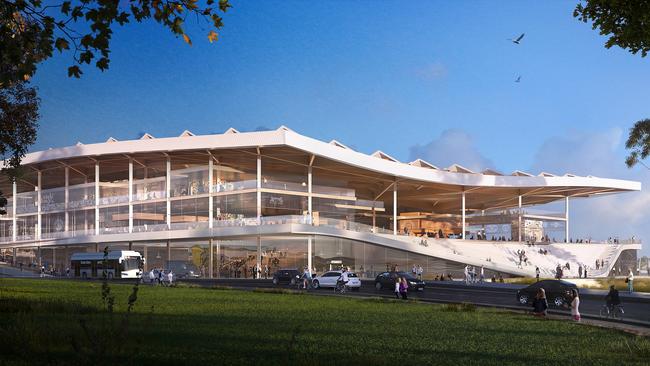
It is as strong a sign of confidence in our city as anyone could imagine.
And then, at the very opposite of the positivity scale, we have the wretched decision by the independent Planning Commission to reject the proposed multimillion-dollar Bylong Valley coal mine.
That mine would have brought much-needed investment and employment opportunities to the state’s central west. Yet the IPC knocked it back because it feared coal from the mine could be burned in South Korea, and that emissions from 8000km away “will adversely impact the NSW environment”. Forget the adverse impacts on the NSW environment of continued high regional unemployment, then. And forget the gigantic benefits to the overall NSW environment of billions in coal royalties, and the near $20 billion in revenue from NSW coal exports.
MORE: $750m cash injection for new Fish Market
And forget the people of NSW, especially those living in the area where the proposed mine loomed as a lifesaver. “The arrogance of those opposed to the mine is ridiculous,” Mid-Western Regional councillor Peter Shelley told The Daily Telegraph. “They have no regard or empathy for the hurt, heartache and emotional pain families will go through because of a lack of work in these towns.”
NSW Minerals Council CEO Stephen Galilee was similarly furious, and with good reason.
“The role of the IPC demonstrates how the NSW Government has allowed the economic future of regional NSW, and regional communities like Kandos and Rylstone, to be left at the mercy of an unelected and unaccountable body, with no legal obligation to abide by any of the policies of the elected government of the day,” he said.
“This is an absurd and dangerous economic approach that risks making NSW an international investment laughing stock.”

But climate activists, for whom employment, investment and progress are not great priorities, were overjoyed. “Coal is the new asbestos, nobody should touch it,” Climate Council CEO Amanda McKenzie said. “Today’s decision is hugely significant and appropriate just days ahead of the global climate strike and global climate week in New York. This decision is one that considers our young people and future generations.”
To be clear, it considers them as mere sacrifices to the demon lord of climate change. The narrow, fearful mindset driving this anti-coal madness will obviously not remain confined to fossil fuels. If activists and their bureaucratic allies succeed in destroying our most profitable export industry, they will likely take aim at other targets.
In fact, it is easy to see climate extremists making a case for the reversal of the government’s Fish Market decision.
After all, the Fish Market is already, as Premier Berejiklian pointed out yesterday, our second-most visited attraction in Sydney behind the Opera House. As well, one in five international tourists to Sydney visit the Fish Market.
Those visits represent an enormous amount of carbon dioxide-generating road and air travel. Might a future climate-influenced planning group oppose such a glittering development due to the risk of increased global warming?
Additionally, future bureaucrats could reject an expanded Fish Market for fear of oil spills from fishing vessels at sea, the threat of reduced ocean biodiversity or any other environmental concerns.
By the same obsessively timid standards, just about every one of the advances that have made Sydney and NSW the great places they are today would have been vulnerable to a bureaucratic knock-back. The independent Planning Commission needs to be gutted, filleted and put on ice. It is a dead fish in a state that should be alive with opportunity and potential.
SEPTEMBER 18: Gladys survives and now needs to rebuild and refocus NSW
NSW Premier Gladys Berejiklian is still NSW Premier Gladys Berejiklian after a leadership spill evaporated yesterday morning.
Allies of the Premier were dismissive of the spill when it was first mooted, and were scornful when it failed to eventuate. “This is not a spill, it’s a joke,” Minister for Energy and Environment Matt Kean wrote.
“Gladys will be leader tomorrow and the day after and for as long as she wants.
“She won us the election in March. She is our best asset and any challenge to her leadership is an act of political lunacy.”

Berejiklian can certainly lock in Kean’s vote. But while sources put the total who would have opposed the Premier’s continued leadership at fewer than 10, it remains the case that Berejiklian and her supporters should never have let matters reach this point.
As Kean mentioned, Berejiklian’s election win still leaves her with an amount of political and party capital. Now might be the ideal time to begin using it.
All of the government’s energy has lately been sapped by the abortion debate. The Premier needs to rebuild and refocus on the future of NSW and how exactly to build it. Crank up the investment and development.
RELATED: Rush to end rebel Liberal abortion mutiny
A whip-cracking Berejiklian should up the pace. And while she is at it, any residual anger at the events of yesterday might effectively be channelled into carving aside this state’s bureaucratic and regulatory barriers.
These barriers are a form of pre-emptive punishment for any business people or industries seeking to advance NSW. Their work should be rewarded rather than discouraged.
Even some of the most minor steps in running a business in NSW involve an unholy amount of red tape. Wherever the government is able, regulations need to be blitzed.
The Premier should have extra time to do this now that the Independent Commission Against Corruption will at least temporarily take Sports Minister John Sidoti off her hands.
Stepping down ahead of ICAC’s investigation, Sidoti again stressed his innocence.
“The allegations made against me by the media and exacerbated by the Opposition and the crossbench in budget estimates and parliament, are false and inaccurate,” he said.
Sidoti’s saga has quite a way to go. And Gladys Berejiklian seems set for a long run herself.
SEPTEMBER 16: Stop renewing the subsidies
Solar and wind are known as renewable energy sources. Your money, however, is not renewable. Once it is spent it is spent forever.
And that includes when you spend it subsiding renewable energy, even though you may not use such energy yourself.
According to analysis of the federal government’s renewable energy targets, Australian families pay at least $68 extra on their already excessive electricity bills to subsidise rooftop solar and wind farm projects.
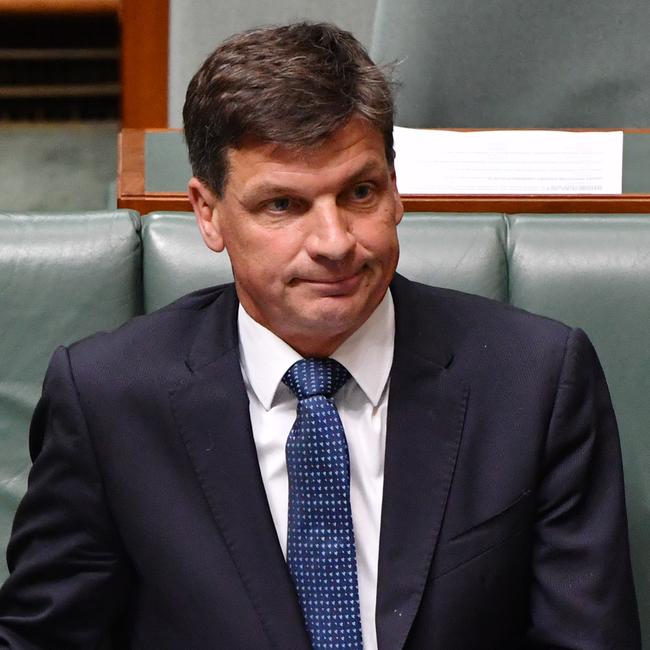
Additionally, the NSW government adds to your power bills an average $22 for the NSW Climate Fund levy and nearly $10 for the NSW Energy Savings Fund.
Non-renewable financial resources are taking hits from every direction. This situation, to use a phrase very popular among wind and solar advocates, is not sustainable.
And it is a widespread belting.
All consumers end up incurring costs, including apartment renters who are unable to use solar panels, residents in locations unsuitable for solar installation and large families who incur higher levies because they use more electricity.
The Australian Competition and Consumer Commission has called on the federal government to wind back rooftop solar subsidies. Unfortunately, Energy Minister Angus Taylor declines to hear that call.
Consumers are entitled to feel let down by Taylor, who gave reason for hope during his first speech as minister last year.
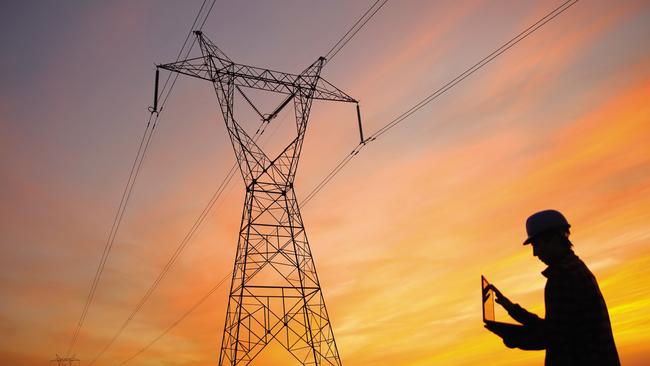
Taylor indicated then that his “first and only priority” was to cut power prices. Furthermore, Taylor said he did not support “expensive programs that … funnel consumer’s hard-earned money into vested interest resulting in increased prices and reduced reliability”.
Yet here we are, with those subsidies set to run until at least 2030. Taylor may need to review the ACCC’s August report on national energy issues.
“There are opportunities for all governments to provide additional savings to customers by removing subsidies or costs of environmental green schemes,” the report said.
“The subsidy for the installation of small-scale renewable energy systems is no longer required given the dramatic fall in the cost of solar installations.”
More broadly, subsidies warp the energy market and cause costly imbalances. Let solar and wind stand by themselves.
SEPTEMBER 14: It’s cold, flat and has a winning night-life
Rules, more than any other factor, determine societal outcomes.
Canada, the US and Mexico all share a common landmass, but each nation is massively distinct due to profound regulatory and governmental differences.
In relatively restrictive and rule-fixated Canada, for example, one province actually outlawed coloured margarine until 2008 in a bid to protect the dairy market.
Down Mexico way, however, certain areas are largely, and dangerously, lawless.
Yellow margarine is the least of anyone’s worries in Los Cabos, where 365 people were killed in 2017 alone.
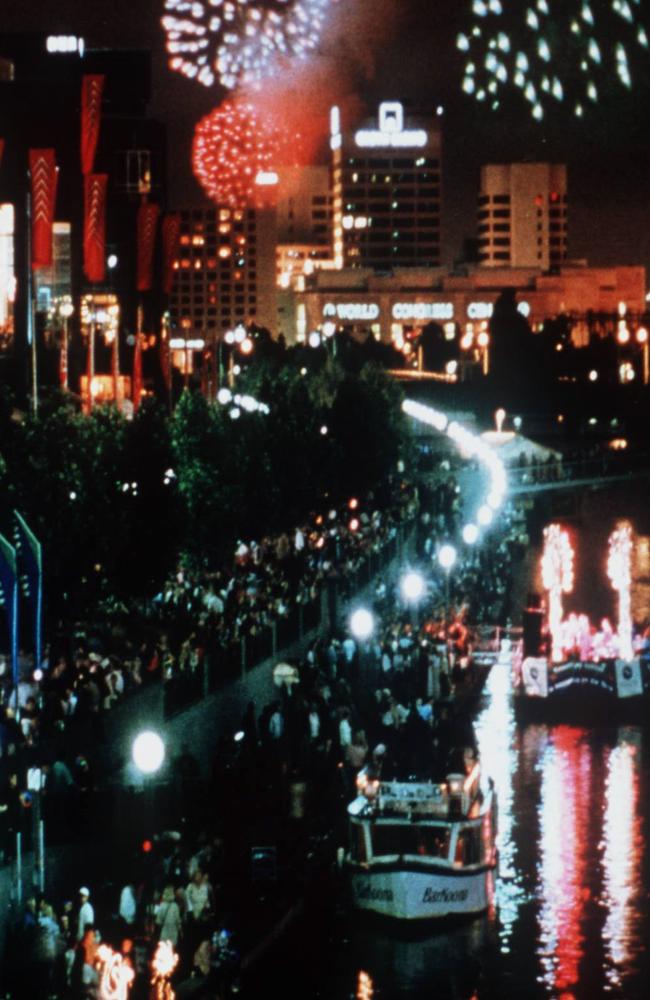
Sydney and Melbourne may be only 1000km apart, but again regulatory differences set the two capitals apart.
All things being equal, Sydney should hold an advantage as a night-life city. Our weather is better, our harbour more attractive and our cityscape far more dramatic.
Yet the night-time economy in cold, flat Melbourne is growing at twice the rate of Sydney’s.
According to the latest Local Government Safe Cities Network figures, Melbourne’s night-time economy is pumping more jobs, money and enjoyment into the southern city.
One reason for this is that Melbourne enjoys more liberated late-night venue regulations, while Sydney still labours under lockout laws.
“Sydney needs to remain a great city of opportunity for living, doing business and attracting and entertaining international tourists,” Katherine O’Regan, executive director of the Sydney Business Chamber, said. “Repealing the CBD lockout laws is a critical first step toward realising these opportunities.”
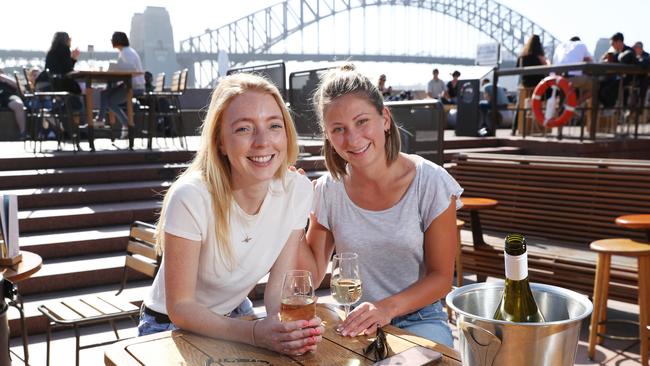
That should be only a first step. Melbourne is also beating us when it comes to major events and general excitement. Sydney desperately needs to ramp up the thrills.
Otherwise, we’ll keep hearing this sort of thing from Melbourne Lord Mayor Sally Capp: “Our city’s night-time economy grew by $310.3 million last year … these figures demonstrate that Melbourne is Australia’s events and cultural capital.”
Capp is — although it hurts to admit it — completely correct. By comparison to Melbourne’s windfall $310.3 million, Sydney’s night-time economy grew only by $234 million.
Fun is a serious business. If Sydney is to increase its share of evening spending, we need to ease off a little on the rules.
SEPTEMBER 13: Cut the gas talk and go for jobs
Everything is on the table, according to Labor heavyweights, as the party reviews all of its policies following this year’s shattering federal election defeat.
This is a sound move, especially given that Labor was extremely confident that their policies as taken to that election had resonated with voters.
Labor expected to win but instead received its lowest primary vote in a century. Plainly, a policy overhaul is required.
This is particularly the case in the areas of carbon dioxide emissions and energy costs.
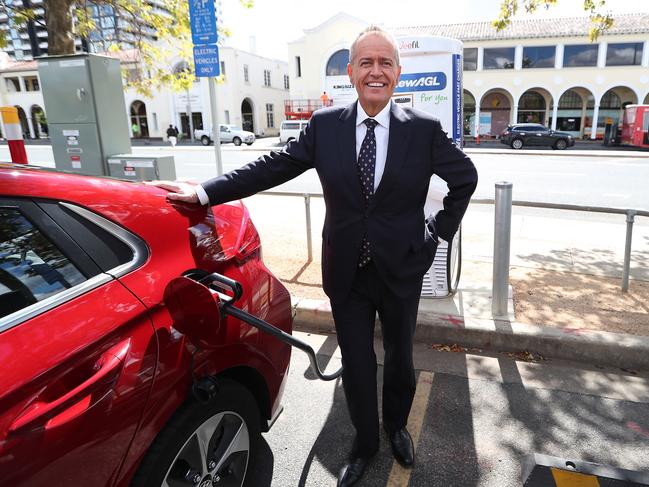
Already Labor is talking about ditching its pledge to reduce overall emissions by 45 per cent by 2030, a target some in the party feel is unrealistic.
Instead, the party may aim at cutting emissions to zero another two decades beyond the 45 per cent deadline.
“Labor is evaluating all its policies and we need to make sure that we adopt a trajectory that delivers net zero emissions by 2050,” Labor’s assistant climate change spokesman Pat Conroy said. “That has to be the overriding objective.”
This is also completely unrealistic, obviously, but at least Labor would be pushing things so far down the track that no current Labor identities would be required to deal with it.
Ominously, however, Labor’s usually more sensible Joel Fitzgibbon this week told parliament that Australia might have to reconsider a carbon tax.
“I know some members will be thinking: ‘Do we have to talk about the carbon price again?’ ” Fitzgibbon said.
“Of course we do. It has to be part of the mix if we are to meet our Paris targets. We do need to start talking more about the elephant in the room.”

A first point: nobody in Penrith cares about Paris. Labor is an Australian political party serving Australians, or at least it should be. This also applies, obviously, to the Coalition.
And a second point: rather than addressing any elephants, Labor might realise during its policy review there exists a very real opportunity for the party to reinvent itself as a force for working people.
Instead of appeasing wealthy urbanites who will never feel the financial sting of emissions policies, Labor could become a pro-energy party of employment and advancement for average working Australians.
It worked before. Perhaps it might just work again.
SEPTEMBER 12: Crisis for you but not them
In a genuine emergency, people will risk their lives, abandon their properties and spend all of their savings. They will do anything to avert a greater disaster. Genuine emergencies demand extreme responses.
Zali Steggall, independent MP for the seat of GetUp!, believes we are in a climate emergency. Together with fellow independent Andrew Wilkie and Greens MP Adam Bandt, Steggall is pushing for formal parliamentary recognition of a climate emergency in Australia.
Yet what steps has Steggall herself taken to deal with this apparent crisis?

Well, she is going to buy an electric car. But not immediately. In fact, Steggall has not put a date on her planet-saving vehicle upgrade.
“I am committed to when it comes time to changing my vehicle, that I will change it to an EV,” Steggall told Sky News.
Why not sooner? Because dealing with the climate emergency must wait until Olympian, lawyer and $207,100 per year MP Steggall receives government assistance.
“I like every other Australian have budget pressures,” Steggall, who gets around in a nice Nissan Pathfinder, told Sky.
“I would really welcome the government taking some steps to make EVs more affordable so I could accelerate the process in which I could transfer my car.”
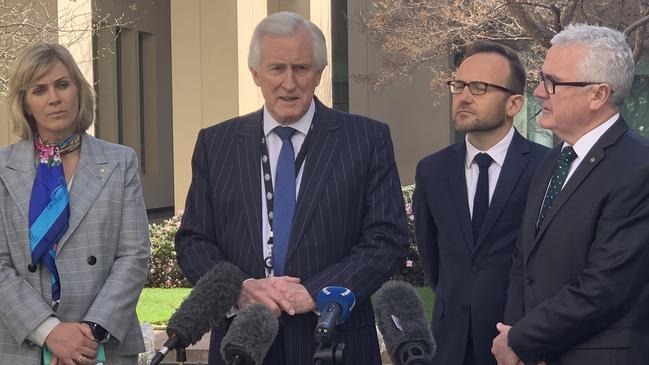
Australian taxpayers, the overwhelming majority of whom earn far less than does Steggall, might baulk at subsidising the MP’s next ride.
And they might also question how genuine is this alleged “climate emergency” if even its most ardent promoters seem so very relaxed about it.
Steggall is joined in her climate emergency quest by former Liberal leader John Hewson, an eight-year parliamentarian who specialised in losing elections and being confused by cake.
“My view,” Hewson said yesterday in Canberra, “is it was an emergency 30 years ago.”
Really?
Well, that would wind back the clock to the late 1980s, when Hewson had just become the member for Wentworth. Hewson owned a Ferrari at the time, which is not the expected reaction to a climate emergency.
As it happens, Hewson held on to that Italian V8 — plus a Bentley and a Harley-Davidson — until an auction last year.
It’s a funny old emergency when no sacrifices are involved.
SEPTEMBER 11: Pollies learning coal hard facts
As Samuel Johnson observed: “When a man knows he is to be hanged in a fortnight, it concentrates his mind wonderfully.”
Australian politicians have clearly had cause to dwell on this notion following the recent and decisive federal election.
Presented by the Left as a climate vote, the Australian public substantially repudiated global warming alarmism. Subsequently, there has been a pronounced shift in the attitudes of our politicians towards the issue of climate change.
In Queensland, where voters swung aggressively away from Labor, Premier Annastacia Palaszczuk suddenly became extremely supportive of the proposed Adani coal mine.
Federally, Labor’s Mark Butler promises a “ruthless and unsparing” post-election review of his party’s failed policies, including those involving climate change and energy.

Facing future electoral executions, their minds, you might say, have become concentrated wonderfully. And now NSW environment minister Matt Kean is rightly prioritising reliable and inexpensive coal-delivered power over expensive and unproven renewables.
“The people of NSW want to protect the environment but not at any cost to their hip pocket. We won’t repeat the mistakes of the past and we want to avoid new taxes and regulation,” Minister Kean said in an interview with The Daily Telegraph.
By “mistakes of the past”, Kean presumably refers to huge tax-funded subsidies for the likes of solar and wind power.
The pursuit of renewable energy targets through solar and wind has hit NSW taxpayers hard in multiple harmful ways. First, there is the cost of the subsidies themselves.
And then there is the market-distorting effect of those subsidies, which erode the investment attractiveness of coal-fired plants. With reduced investment comes a gradual industry-wide decline.
Additionally, NSW citizens face a challenging jobs market because employers, stung by massive power charges, cannot afford to hire new staff.
While still committed to eventual zero net emissions, Kean will not rule out legislation to secure coal for power providers and declares the NSW government “won’t place ideology before people”.
Makes sense. Otherwise the people will vote them out.
SEPTEMBER 10: Addicted to bureaucracy
There has long existed in Australia a mindset that believes every problem is able to be solved by throwing more bureaucracy at it.
Government intervention, invariably at enormous cost, is presented as the answer to every flaw and every need, from the environment to the arts.
And now the federal government is preparing to lavish up to $65,000 worth of rehab upon welfare recipients who test positive for drugs.
That tax-provided cash will come from a $10 million treatment fund attached to a trial among 5000 Newstart and Youth Allowance recipients.
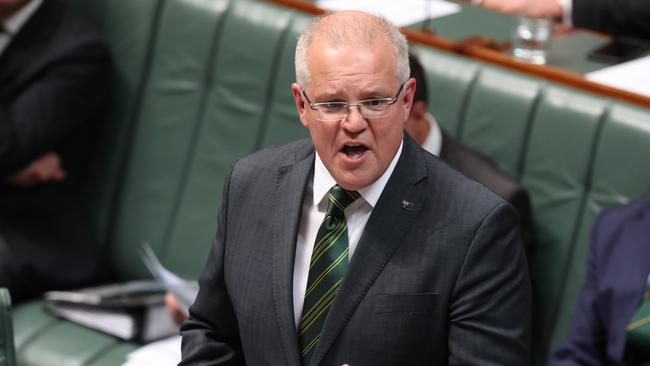
About $6 million is earmarked for individuals’ rehabilitation, while $3 million will go on drug treatment schemes in trial locations and another $1 million on something called “case management services”.
Consider now the bureaucracy that will be required to support this project. It will be massive, involving all manner of managers, field workers and medical staff.
And then will follow the reports, government studies and other elements. Overnight, yet another government-spawned welfare industry will evolve.
Meanwhile, personal responsibility is largely put aside.
Yesterday it emerged that some 4600 welfare recipients were granted a 13-week temporary exemption from jobseeker requirements in 2017-18 because of drug or alcohol misuse.
This represents an increase of 60 per cent on 2012 levels. “This data shows that thousands of welfare recipients believe that their drug use means they can’t show up for job interviews or work appointments,” Social Services Minister Anne Ruston said, reasonably enough.

Then came her second line: “Drug addiction is a serious scourge on our society and the government will use all means at our disposal to help people get over their substance abuse issues so they can get back into the workforce.”
Translated, that means people who have avoided drug addiction and who have worked hard for earn their wages and to support their families will pay millions to prop up those who have chosen a lazier and more indulgent path.
If welfare recipients “believe that their drug use means they can’t show up for job interviews”, then they should obviously stop taking drugs.
Instead, take responsibility.
SEPTEMBER 9: Gladys and the big silencing
NSW Labor’s ICAC controversies could not have come at a better time for Gladys Berejiklian’s Coalition government.
Prior to those explosive ICAC hearings, the government was mired in an abortion debacle entirely of its own creation.
But that issue has definitely not gone away. Far from it.

While all eyes were on Labor and their donation disaster, disaffected Liberals were still seething over the abortion bill.
Indeed, as The Daily Telegraph now reports, some senior Liberal MPs are furious party members were “strongarmed” into blocking a debate on abortion on the basis it would “detract” from Premier Berejiklian’s election victory.
On Saturday, even as most of the state’s political pundits were still combing through Labor’s ICAC debris, the Liberal Party blocked a secret ballot on an urgency motion condemning the handling of the abortion bill.
The blocked motion, at Saturday’s Liberal state council meeting, was narrowly defeated 217 votes to 236.
The extreme closeness of that vote shows just how significant is the simmering civil war within the state Liberals.
There is now even talk of preselections being threatened over the abandoned debate.
“The implication was that it would be in your best interests not to support the motion, or that it would be a career-limiting move to support it,” one anti-abortion NSW MP told The Daily Telegraph.
“We were told that the Premier would not be happy if abortion was debated and that we need to be solid.”
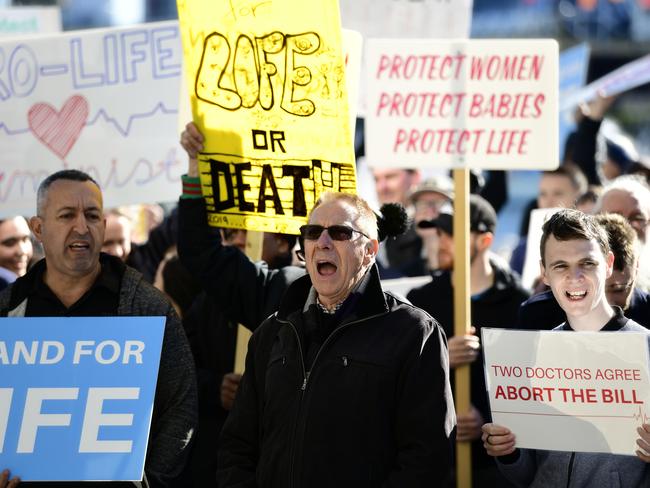
A pattern seems to be emerging. Premier Berejiklian failed to raise abortion as an issue during the election campaign, therefore also avoiding debate.
Why all the secrecy?
Why can members of the public or even members of the state government not be trusted to talk about this?
“I heard of several people being leaned on to vote against the urgency motion,” another MP told The Daily Telegraph.
“The message was … you may have a tough preselection in the next few years.”
Well, that would be a very effective way of cancelling any abortion debate.
But it is scarcely the way an elected government should operate in a democracy.
Let the people have their say. Let them voice their opinion.
SEPTEMBER 7: Schools that go bananas
The nature of the educational services supplied by certain Islamic schools in Australia has long been of deep concern to authorities.
In 2005, a teacher at Melbourne’s Islamic Werribee College revealed that a visiting imam had told students Jews were trying to poison them.
Following a tirade against Israel and the US, the teacher informed Melbourne’s Sunday Age newspaper, “the imam told the students that the Jews were putting poison in the bananas and they should not eat them”.
A teacher at another Islamic school in Victoria told the same newspaper she had to resign because “the atmosphere at the school was unhealthy.”
How unhealthy?

“When you asked children to write about their favourite hero, they nearly always wrote about Osama bin Laden.”
Some 14 years later, The Saturday Telegraph reveals that an Islamic organisation approved to build a $10 million school in Western Sydney has been linked to the extremist militant group Hezbollah.
By way of background, NSW-based charity the Al-Mabarrat Benevolent Society received state and council approval in 2017 to build the Islamic Arrahman College in Austral.
That charity was founded by the late Mohammad Hussein Fadlallah, described by the US government as a “leading ideological figure” of Hezbollah and listed as a Specially Designated Terrorist by the US Office of Foreign Assets Control.
According to Yacoub Hammoud, one of the charity’s five directors, there should be no controversy. The Al-Mabarrat Benevolent Society, he claims, is “just a charity”.
Be that as it may, Hammoud has in the past posted on Facebook clear messages of support for Hezbollah’s current leader, Hassan Nasrallah.
Despite the posts, Hammoud claimed yesterday both he and the charity “definitely” do not support Hezbollah and that his posts were merely personal.
Still, even the hint of any extremist sympathies in any area of society is obviously worrying, and that worry is compounded if such a presence is in schools.
Children are often the most vulnerable to the lure of extremism. A significant number of those from Australia who joined Islamic State in Syria, for example, were teenagers who’d become radicalised.
Any extremism in schools is grounds for investigation.
SEPTEMBER 6: Labor’s show to end all shows
Put aside for a moment the political implications of the Independent Commission Against Corruption’s ongoing investigation into allegedly illegal Labor donations.
Put aside, too, the damage Labor has brought upon itself and upon democracy in NSW.
Consider instead the utterly compelling human drama of these hearings. The ICAC show has it all — shattered alliances, tears, regrets, plot twists, money, accusations, fear and distrust.
And, of course, Australia’s most famous Aldi shopping bag.
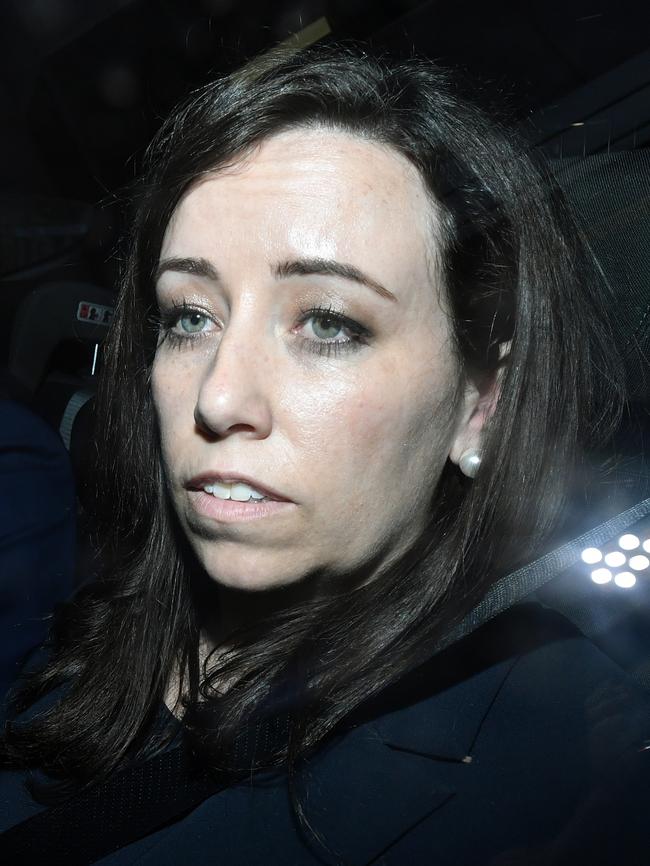
Admittedly, some of the drama has been a little forced.
Former Labor senator Sam Dastyari’s arrival at ICAC aboard a rented bicycle was a blatant “look at me” moment in an otherwise extraordinary sequence of witness appearances.
Yesterday’s hearings might have been the most emotional yet.
Returning to give further evidence, suspended Labor Party boss Kaila Murnain at one point wept as she defended earlier claims that ALP lawyer Ian Robertson had told her never to mention an alleged $100,000 party donation.
Murnain had previously claimed Robertson told her “don’t tell anyone about it” and “don’t record this meeting. Don’t put it in your diary. Forget the conversation happened.”
Robertson’s barrister, Tony McInerney SC, yesterday accused Murnain of inventing Robertson’s words, which he sharply described as “absurd” and “implausible”.
“You just thought he’d pull the pin on a grenade, clutch it to his chest, and blow himself up, is that what you’re saying?” McInerney continued, adding that Murnain was throwing the party’s lawyer “under the bus” to “cover your own backside”.
“If you think this is some made up story to throw someone under the bus, you’re kidding yourself because this is not easy,” Murnain fired back.
And then the tears began, drawing an unimpressed review from McInerney.
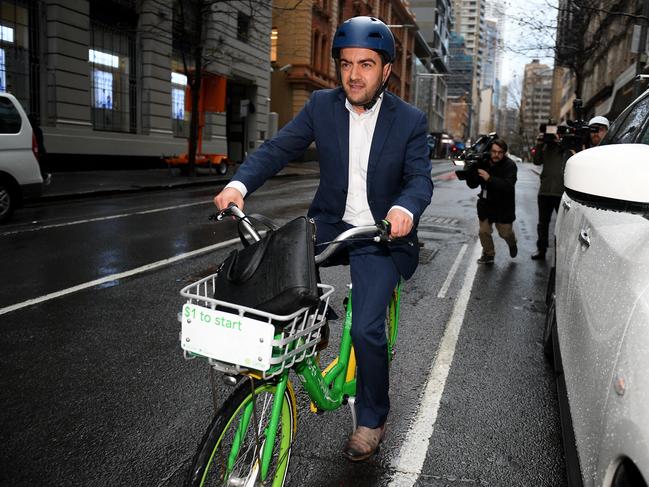
“They’re fake tears, aren’t they Ms Murnain?” the lawyer said. “They’re not real.”
“Everything about this is true and real and it is not easy,” weeping Murnain responded.
Murnain is scheduled to continue her latest appearance today. Given the nature of these hearings to date, few onlookers would be game to predict what might next occur.
Except, of course, for this: it will not be good for Labor.
SEPTEMBER 5: Labor the party of sea deaths
Former federal Labor leader Bill Shorten was criticised during the federal election for appearing to tailor his messages to different audiences.
Speaking in urban Victorian seats, for example, where Labor faced electoral challenges from Greens, Shorten was very much opposed to coal mining.
But speaking in coal-dependent areas of Queensland, Shorten was far more positive.
Labor supporters hoped new leader Anthony Albanese would be more direct and more consistent than his election-losing predecessor. And he certainly began strongly, taking a firm stance against problematic CFMEU boss John Setka.
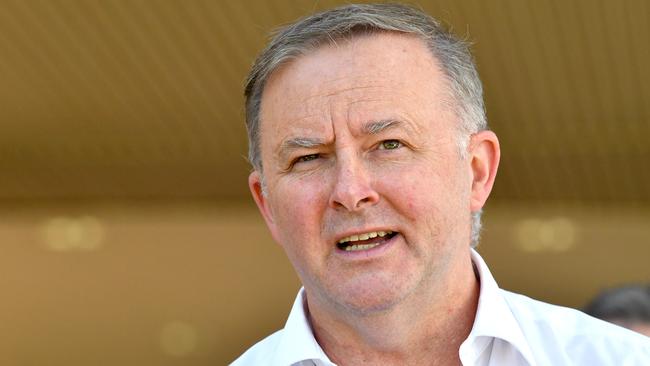
“He has made a series of comments over a long period of time that has brought the Labor Party and the labour movement into disrepute,” Albanese declared back in mid-June. “He will be expelled on July 5.”
Well, we’re a month past that deadline and Setka still holds his Labor membership. But another Albanese declaration, from 2013, may prove more troublesome for the Labor leader.
During that year, Albanese sought to assure voters that Labor had learned its lesson on illegal boat arrivals.
“If you come to Australia by boat without a visa,” Albanese announced, “you will not be settled in Australia.”
But those strong words have not survived a real-world test. Albanese is now championing the cause of Nades Murugappan and his wife Priya, who face deportation after arriving in Australia from Sri Lanka by boat without visas in 2012 and 2013.

The couple have since had two children, aged 2 and 4.
“The government can stop this and the government should stop this,” Albanese said of the planned deportations, which directly contradicts his previous stance. It also goes against Labor policy.
That policy became far stronger following Labor’s ruinous border capers under PMs Kevin Rudd and Julia Gillard. But it is now revealed as false.
From its leader down, Labor remains the official party of people smugglers and deaths at sea.
As Home Affairs Minister Peter Dutton put it yesterday, Albanese “was one of the senior ministers sitting around the Cabinet table when decisions were made that resulted in 1200 people drowning at sea.
“If he doesn’t get it now, then I’m not sure when he will.”
Labor seems unable to learn.
SEPTEMBER 4: A release that makes no sense
The impending release of convicted killer and paedophile Michael Guider is almost impossible to understand for anyone with an awareness of his sickening crimes.
Samantha Knight’s vicious killer is due to depart Long Bay prison on Thursday. Judge Richard Button’s release ruling makes for at times extremely puzzling reading.
“While it could not be said definitely that I am completely convinced his attraction (sex attraction to children) has completely disappeared, the defendant has done all that can be done in terms of rehabilitation in a prison setting,” the judge’s explanatory release statement points out.
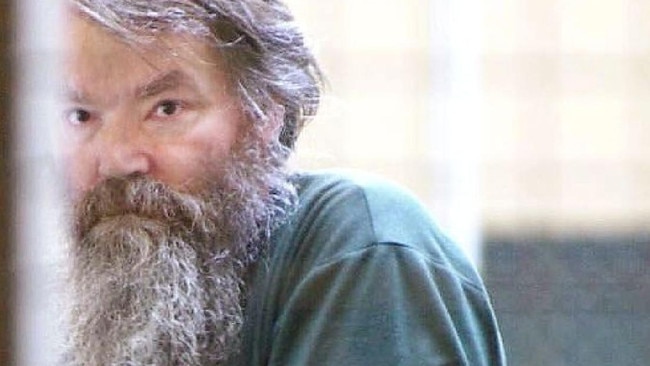
Many will wonder, with considerable justification, why rehabilitation is an issue here.
They might also question the full extent of Guider’s rehabilitation to this point, given that he has never disclosed to authorities the precise location of Samantha Knight’s body.
“Three experts highly experienced in psychology and psychiatry all agreed the defendant’s risks can be reasonably managed under a stringent and lengthy system of supervision within the community,” the judge’s ruling continues.
If Guider requires such stringent supervision, including wearing an electronic monitoring tag, providing a weekly schedule of movements three days in advance and not approaching cinemas, libraries, museums or schools, then why is he being released?
“A further period of incarceration would not serve any rehabilitative purpose,” Judge Button additionally observed.
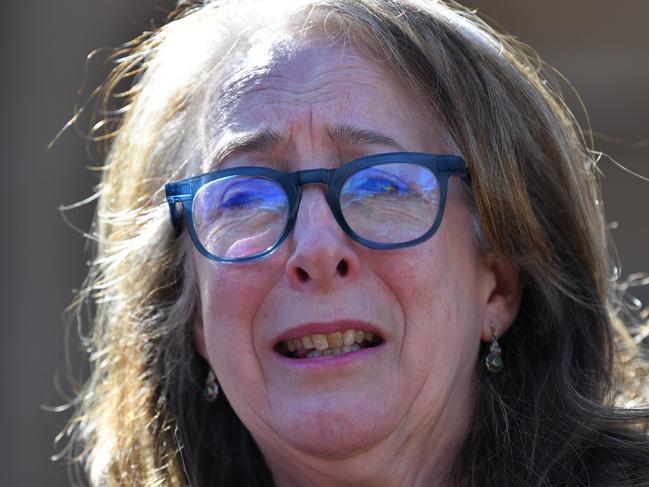
Frankly, there is probably only one person in NSW who cares about Michael Guider’s rehabilitation, and that person’s name is Michael Guider.
“It is a process of assessment of risk with regard to what he may do in the future,” the release statement adds.
Given Guider’s horrific crimes and the sheer number of his victims, any level of risk he presents is surely sufficient to keep him behind bars.
Remember, we are talking about a fiend who drugged a nine-year-old girl to molest her and take what Guider described as “happy snaps”.
Guider had previously been convicted over more than 60 crimes against 11 children.
Michael Guider should not be freed, and his rehabilitation should not be a factor.
SEPTEMBER 3: Member for look over there
In her formal role, former Labor deputy leader Tanya Plibersek is the shadow minister for education and training.
But the factional leftist also serves as Labor’s member for look over there. Plibersek is an absolute master of redirection and distraction.
In 2012, for example, Plibersek expertly sought to avert attention from the then-Labor government’s messy entanglement with controversial house speaker Peter Slipper.
“I think it is right that Mr Slipper has taken responsibility,” Plibersek told the ABC’s Lateline program.
“He's apologised for the language and he's tendered his resignation and it shows two things. It shows that he has respect for the institution of the parliament and it shows that he knows that the language that he has used is wrong and should not have been used.
“And I think it raises the question about the role that Tony Abbott's playing.”
From Slipper to Abbott in just 70 words. Brilliant. And Plibersek is now at it again as Labor faces ongoing ICAC grief.
On the weekend, Plibersek told ABC there needed to be a "culture change in head office".

And then came Plibersek’s usual “look over there” evasion: "But we also need to look at the broader case, what else needs to change in our political system.”
Nice try, but these ICAC hearings are nothing at all to do with our “political system”.
They are nothing to do with any politics outside of Labor’s Sussex St headquarters. They have no bearing on practices in any other political parties.
They are entirely focused on NSW Labor, its profound flaws and inability to follow rules, as even federal Labor leader Anthony Albanese concedes.
"Why is it that we have structures in place, including an administrative committee and other people in the party, who also weren't aware of this?” Albanese wondered following last week’s ICAC hearings.
"What clearly needs to be examined is, quite frankly, a review of how this occurred and structures put in place to make sure it can never occur again."
So Labor already has “structures in place” yet needs further “structures put in place”. Good luck getting that past the NSW Department of Planning and Environment, Mr Albanese.
Pro tip: keep those structures below nine storeys and you might stand a chance.
SEPTEMBER 2: Elderly paying for care but not receiving it
The profit motive is an essential component of quality healthcare.
Without a profit motive, there is little incentive for companies to invest in medical science and technology, for drug manufacturers to research new medicines or for medical students to put in years of intense study to obtain their qualifications.

A profit motive also ensures — or should ensure — that a profit-driven healthcare provider does its utmost to maintain standards and to uphold its good reputation. If standards slip, then the logical consequence is a decline in business.
Bupa is Australia’s largest for-profit aged care provider. One would imagine, then, that the company would strive to deliver the very highest levels of care throughout its 78 nationwide nursing homes.
Yet The Daily Telegraph’s investigation into Bupa nursing homes reveals case after case of resident neglect.
During just the past four years, accreditation standard spot checks in NSW alone have resulted in nine Bupa nursing homes being put on notice. In January, two centres had their operating licences withdrawn.
One Bupa-run age care facility, in the South Coast town of Eden, recently failed to meet standards in 30 of the 44 required benchmarks.
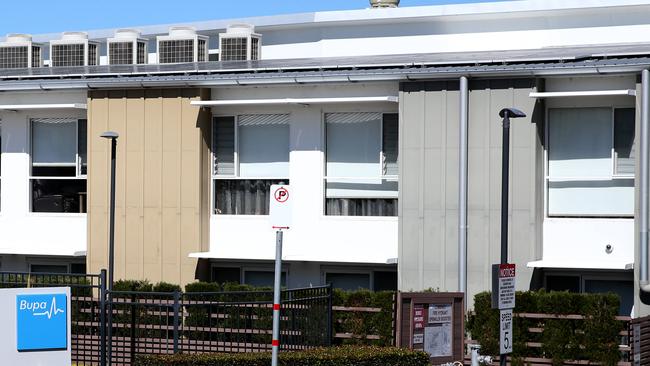
These were no minor lapses. The benchmarks included pain management, hydration, nutrition and palliative care. In other words, just about every single crucial aspect of age care.
Bupa management seem alert to these issues, but a sense of urgency may be missing.
“Where we haven’t met the required standards in some of our homes, we’re sorry and are committed to making the necessary improvements to put things right,” a Bupa spokesman told The Daily Telegraph.
“We’re working closely with the Department of Health and the Aged Care Quality and Safety Commission to restore confidence and ensure compliance in all our homes.”
Bupa generated more than $1.4 billion in 2018. Up until this point, at least, Bupa’s sound reputation is clearly driving an extremely productive business.
But here’s the thing about profit motives. Over time, underperformers generally do not prevail in the open market.
Bupa desperately needs to get its age care facilities into gear, firstly for its many residents and then for its shareholders.
The Daily Telegraph, printed and published by the proprietor, Nationwide News Pty Ltd A.C.N. 008438828 of 2 Holt St, Surry Hills NSW 2010, at 26-52 Hume Highway, Chullora. Responsibility for election comment is taken by the Editor, Ben English.
